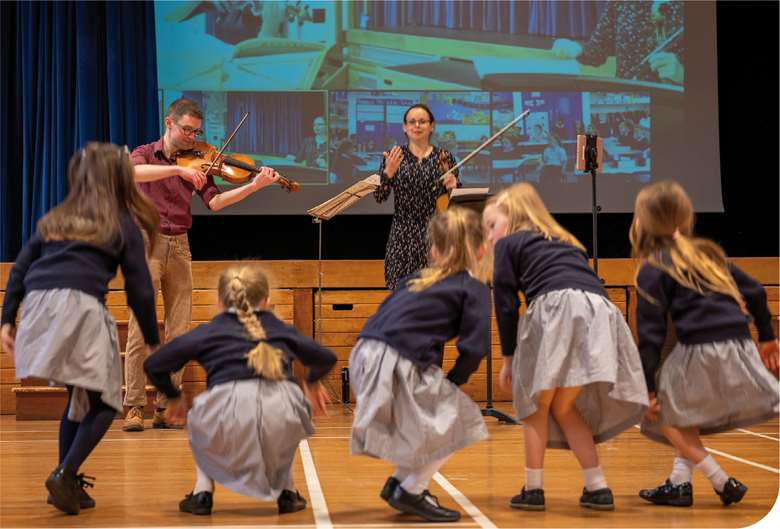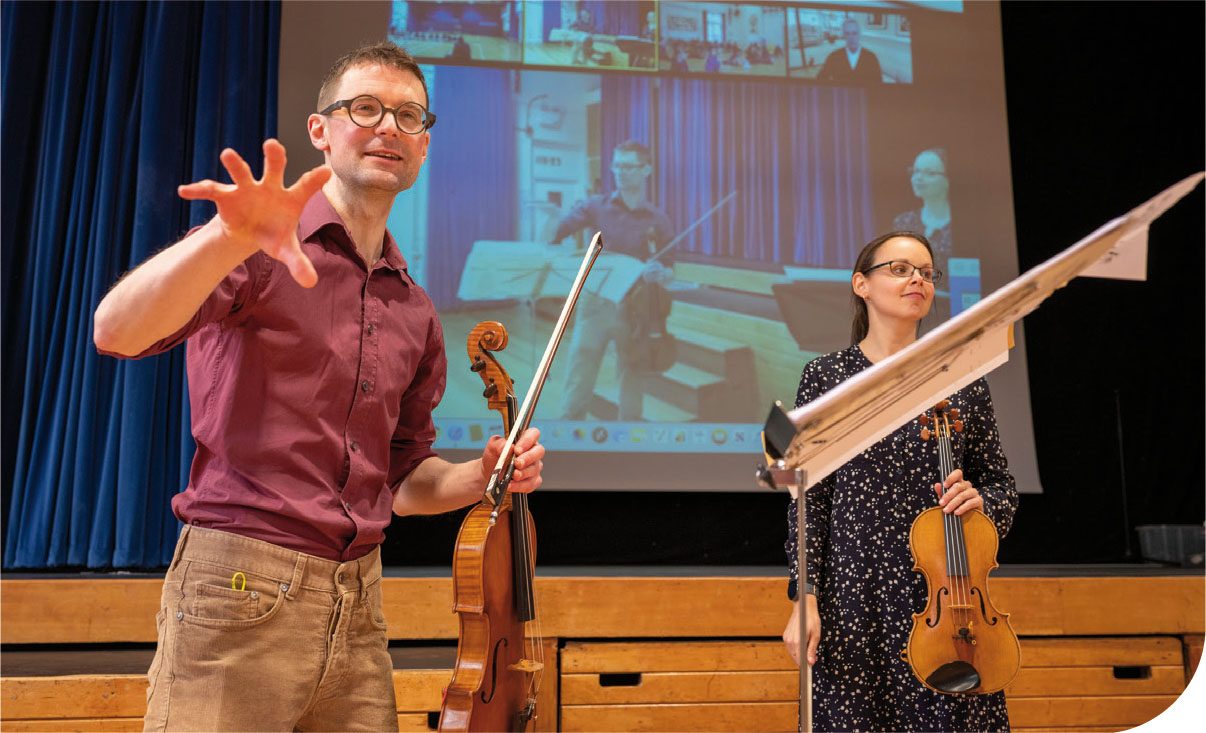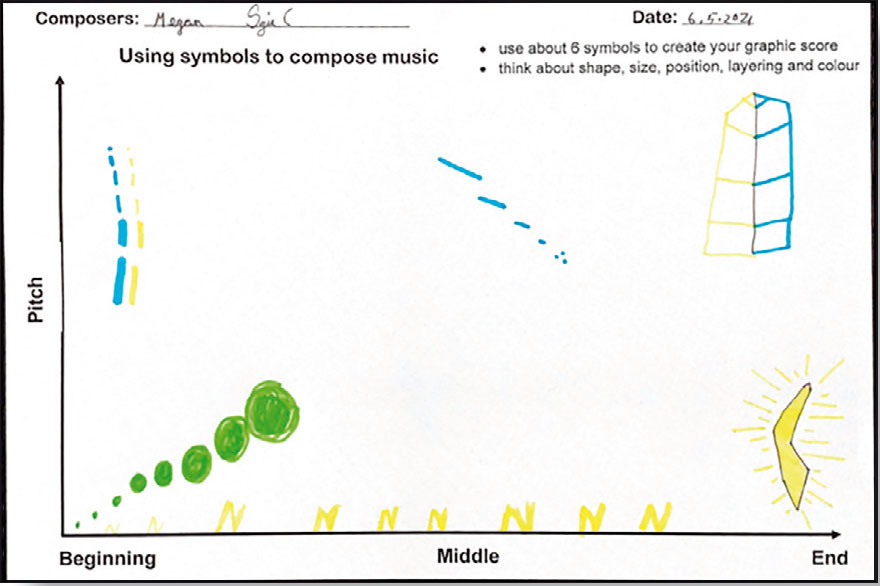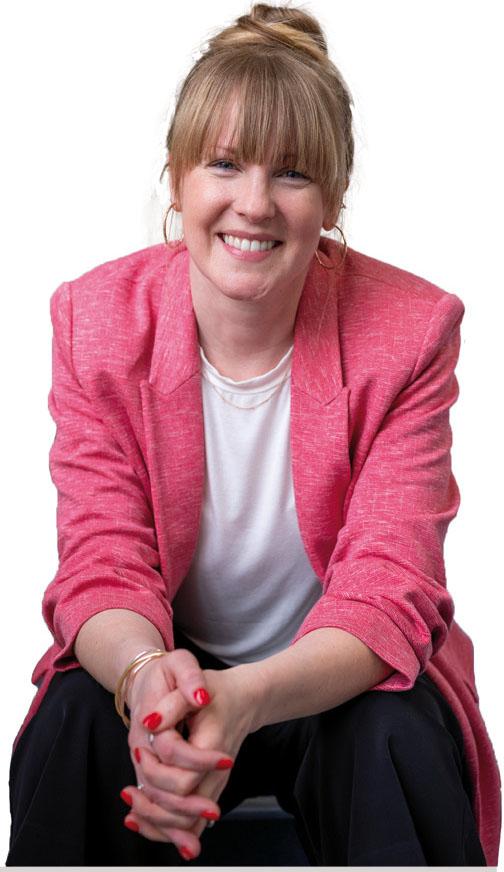Write like a girl: Berkeley Ensemble
Harriet Clifford
Thursday, July 1, 2021
While some progress has been made in the representation of women composers at all levels of music education, there's still a way to go. Harriet Clifford chats to Ruth Coles, a head of junior music who has created an inspiring project with the Berkeley Ensemble to introduce young students to the works of Errollyn Wallen

Harry Borden
HC: What is the project and how did it come about?
RC: This year has been incredibly challenging on so many fronts for so many people. As a music educator, I felt that it was even harder to deliver a meaningful curriculum when so much of what we were able to do was severely limited. Primary level music lessons are so much more than a lesson; groups of children come together to listen, share ideas, create, sing, and play. They leave the room energised and happy. There was a huge gap in my own life and those of the children I teach when this was not able to happen, despite putting together a swathe of virtual concerts and the jolliest remote lessons I could dream up.
These children needed a voice, an outlet. They needed community, collaboration, and sharing of ideas. I wanted to use the advantages of the new platforms through which we communicate, while keeping it personalised and inspiring. I wanted to give our girls the opportunity to experience more than a music lesson and really study the work of a female composer in depth, and then become composers themselves. I approached the Berkeley Ensemble, who have done excellent work in secondary schools with GCSE Music students. It was definitely a meeting of minds. Having put together a plan, I was able to obtain funding through the GDST (Girls’ Day School Trust) and collaborate with two other Trust schools – Sutton High and Howell's in Cardiff.

© Harry Borden
Berkeley Ensemble players Sophie Mather (violin) and Dan Shilladay (viola)
From this, we structured four workshops together with three sessions for teachers in school to run in between, aimed at children aged 6–8. Through a performance of Errollyn Wallen's Five Postcards by the Berkeley Ensemble's Sophie Mather and Dan Shilladay, the children would investigate the huge variety of sound and colour in these pieces. They would then begin to create their own graphic scores in order to compose their own ‘postcard’.

A graphic score created by a pupil at Howell's School
HC: In general, what experience of music have the girls you teach had up until now?
RC: We are in a great position to be able to provide a really rounded and in-depth music curriculum across the GDST in junior schools. Generally, the teaching of music in a GDST junior school is seen through by one or two teachers and so we can build relationships with these young musicians and nurture their progression. The children are keen, confident, exuberant; a joy to teach.
HC: Why do you think that the children haven't had very much exposure to female composers before this project?
RC: We are living in a time of transition in addressing restrictive gender role stereotypes, but we cannot let up in this drive. Role models are incredibly important for young girls due to the long history of many fields being dominated and occupied by men. When devising a list of works for study at primary level, my entry point for the ‘why?’ is simple – ask anyone to write down the names of all the classical composers they know in 60 seconds. The go-to is Mozart, sometimes Beethoven, occasionally Bach. But with anyone writing that list, be it children or adults, it will always be comprised of a huge list of male composers and either none or a handful of female composers.
I work in an environment which actively promotes ‘girls first’ and we seek out opportunities to promote equality and challenge prejudice where it exists. It's really encouraging to see that the Model Music Curriculum contains some female composers, but they're still only book-ending the Western classical tradition, starting with Hildegard and ending with Meredith and Clyne.
HC: Can you tell me about the content of the workshops with the Berkeley Ensemble?
RC: Every workshop starts with performances or excerpts from the Postcards. Like teaching a text in literacy at this age group, we always start the session with the material so that the girls are as familiar as they can be. We have had two of the four workshops at time of writing this article, in which we have unpicked emotion and scenery for each Postcard, as well as working on what symbols might represent similar sounds. The girls have written short graphic scores which Sophie and Dan have then interpreted – immediate performance of one's score proved pretty amazing for these young composers!
Sophie, Dan and I wanted to ensure that the girls all had the opportunity to speak and share. So, there are lots of questions and answers across the schools, including much waving at each other from their various classrooms! Before the third workshop, the girls are creating a picture postcard for each other which they will receive at the start of the next workshop – they need to guess which of Wallen's Postcards the picture represents. They, in turn, will then send back a graphic score for their sender to interpret on tuned or untuned percussion.
HC: The workshops run until June – what happens then?
RC: In the final workshop, each school taking part will have composed collaboratively one ‘postcard’ which is then performed to them and the other schools. These will be recorded and the scores kept in order to form the basis of another set of workshops. The Ensemble and I are currently planning how we take this forward as we are all very keen that we make this as accessible as we can. At this stage, I know that we have the ability to share this with other GDST schools next year.
 © Harry Borden
© Harry Borden
Ruth Coles, head of junior music at Blackheath High Junior School and Year 3 teacher
HC: Is this project something that could be replicated in other schools without an ensemble partnership?
RC: Yes. I am really keen that this could be used by any interested school or music teacher.
It would be perfect for partner schools or schools in a Hub to use. I am also keen to include schools as a partnership project if they wish to join in the next academic year. If anyone is interested, they can email me at r.coles@bla.gdst.net. Should anyone want the materials and scheme, I will happily provide it. Equally, the Berkeley Ensemble are investigating how to make this available via their website.
Now, let's hear from the experts...
HC: What was your favourite thing about the project?
‘It inspired me and my friends to make our own band. Also, one of the best bits was when they played my drawing!’ Melis, aged 7
‘When we were imagining things that the music felt like.’ Emily, aged 7
‘Getting pictures in your head.’ Esther, aged 7
HC: Why do you think children like you should learn more about women who write music?
‘Because I think all of us want to write music ourselves. You don't have to be a boy to write music.’ Emily, aged 7
'I only knew about boy composers and Mozart and Handel and last but not least The Beatles before we did this project.’ Sahasra, aged 7
HC: What kinds of children do you think can write music if they want to when they grow up?
‘Children like me, maybe?’ Melis, aged 7
‘Everybody, because if you want to write music, just do it.’ Emily, aged 7

